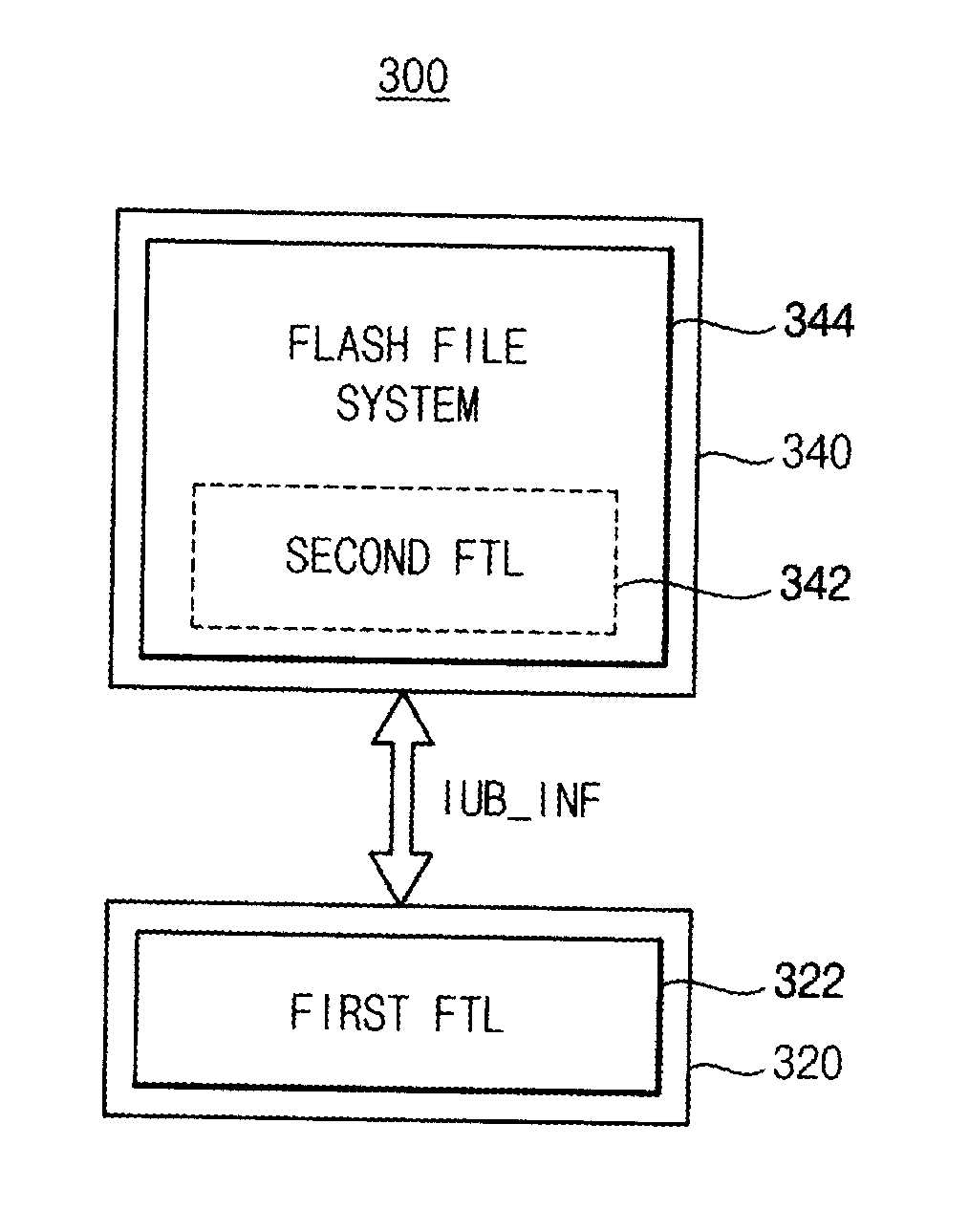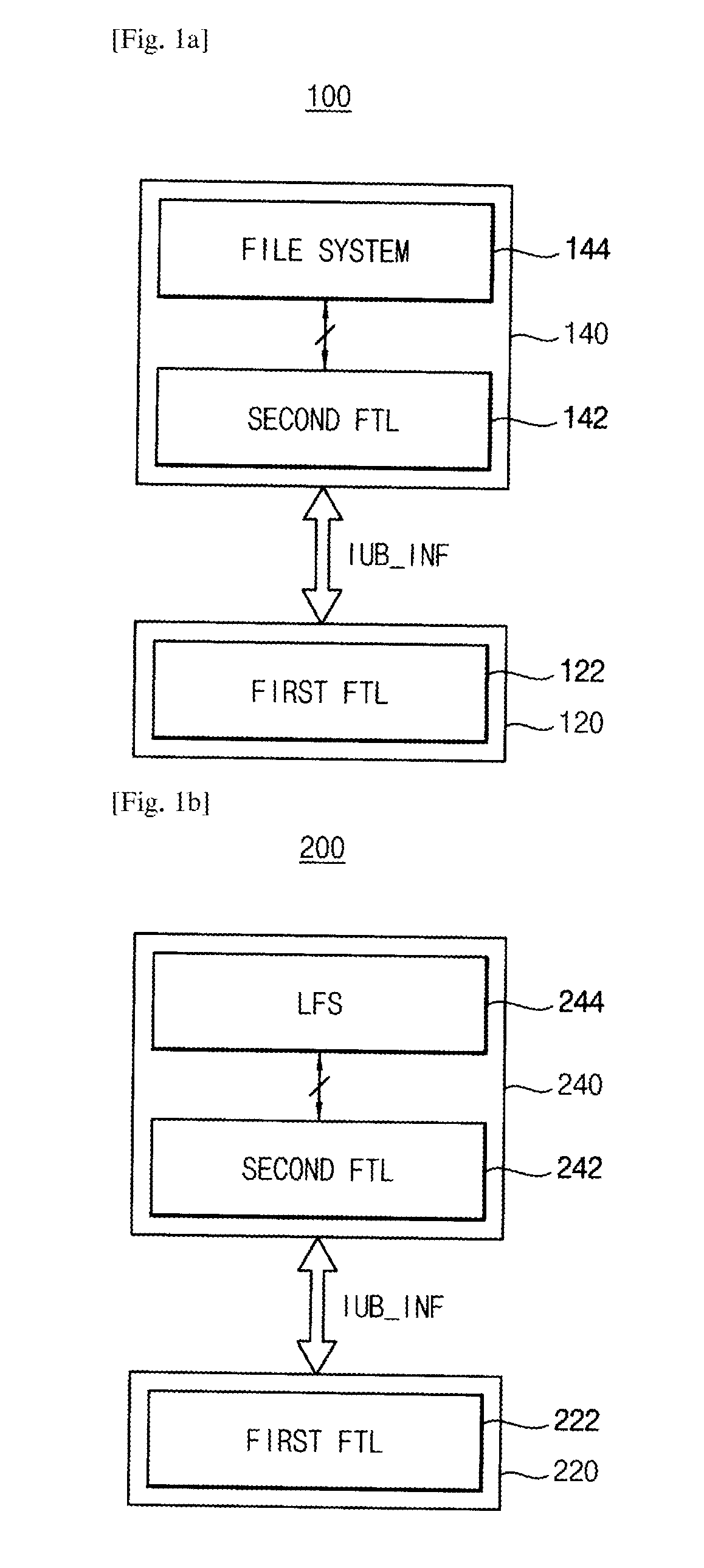Nonvolatile memory system
a memory system and non-volatile technology, applied in the field of semiconductor memory systems, can solve the problems of conventional techniques having fundamental limits, degrading the overall performance of nand flash memory devices, etc., and achieve the effect of accurate knowledge (or efficient control of garbage collection operations) and high speed
- Summary
- Abstract
- Description
- Claims
- Application Information
AI Technical Summary
Benefits of technology
Problems solved by technology
Method used
Image
Examples
Embodiment Construction
[0029]Hereinafter, embodiments of the present inventive concept will be explained in detail with reference to the accompanying drawings.
[0030]FIGS. 1A through 1C are block diagrams illustrating a non-volatile memory system according to example embodiments. For convenience of description, a non-volatile memory system according to example embodiments will be described focusing on the non-volatile memory system 100 of FIG. 1A.
[0031]Referring to FIG. 1A, the non-volatile memory system 100 may include a NAND flash memory device 120 and a host device 140. As illustrated in FIG. 1A, in the non-volatile memory system 100, a flash translation layer that controls an operation of the NAND flash memory device 120 may be divided into a first flash translation layer 122 and a second flash translation layer 142. Here, the first flash translation layer 122 may be included in the NAND flash memory device 120, and the second flash translation layer 142 may be included in the host device 140. Although...
PUM
 Login to View More
Login to View More Abstract
Description
Claims
Application Information
 Login to View More
Login to View More - R&D
- Intellectual Property
- Life Sciences
- Materials
- Tech Scout
- Unparalleled Data Quality
- Higher Quality Content
- 60% Fewer Hallucinations
Browse by: Latest US Patents, China's latest patents, Technical Efficacy Thesaurus, Application Domain, Technology Topic, Popular Technical Reports.
© 2025 PatSnap. All rights reserved.Legal|Privacy policy|Modern Slavery Act Transparency Statement|Sitemap|About US| Contact US: help@patsnap.com



